How to Build a Cash Management Culture

Are you looking to grow your business and put systems in place that will help you better manage cash flow? Cash management is the lifeblood of any company, and it is important to build a culture around the entire process. This article will discuss How to Build a Cash Management Culture!
To begin, you must find the right people. First and foremost, a cash management team needs to understand the challenges they will face, both today and in the future. They need to recognize that managing cash accurately and ensuring that it is received as scheduled is of utmost importance. Now let us get in more details!
Why Build a Cash Management Culture?
Some of the benefits of having a good cash management culture are:
- It allows for quick, accurate and complete payment of your invoices.
- It keeps you up to date with what is happening in your business.
- It creates a culture where your business can grow without taking on additional debt.
- It is an excellent way to build a team that can function effectively and produce results.
If you are really serious about your cash management, then there are a number of ways that you can create a good cash management culture within your business.
How to Build a Cash Management Culture
Cash Management is also about being proactive and knowing your business. Pay attention, stay ahead of the curve, and help your team by educating them on how to handle all aspects of cash management. This can be done through regular meetings to discuss your plans, new software, and purchases, etc.
Well -funded companies with solid cash positions rarely have trouble finding investors or access to capital, so what makes cash management a challenge for some? How can companies build a culture around something so seemingly straightforward? Cash should be easy to manage; but we know it is not always.
1. Analyze your existing process
The first thing to do is take a look at your existing processes as well as how you are managed as an organization. Take stock of where your strengths are and gaps that need to be filled. Find out if your team is properly supported and equipped to handle cash management.
One of the biggest keys to ensuring that your cash management is handled correctly and effectively is the purchasing of the right software. The right software will help you streamline your process and help your team manage cash more efficiently.
2. Document, document, and document again
Once you have the proper people in place, take the time to develop a comprehensive plan for your cash management culture. Document what you are currently doing and the rationale behind it. Keep a record of your cash balances, including details on where the money is coming from, where it is going, and when it is being received.
Reviewing your current processes and making the right decisions are key to building a successful cash management culture. If you feel that you are out of control or facing some type of problem, create a written action plan and have someone else look over it. Make it a priority. Cash management is critical to any company and this step is not something that should be overlooked.
3. Build cash management culture
Build your culture around the importance of managing cash and schedule regular meetings to discuss what you are doing, what your plan is, and how you are doing. You can create a team that will be dedicated to building a culture around cash management.
A culture that is built on the right principles, based on data and strong internal controls for all cash movements and bank account reconciliations. The latter should be an intense focus for every department at every level. It is critical for many reasons, but most importantly in order to ensure that cash is being handled correctly and received by the bank when it is supposed to be received.
4. Educate Your Team about Cash Management
The next step is to educate your team and make sure they understand how important cash management is. They need to understand the importance of collecting cash on time and on the correct amount. Everyone needs to know where the money is coming from, where it is going, and when it is being received.
You too can contribute to the building of a culture of cash management by having a working knowledge of finance and saving. If you know finance, you will be able to help your team with your advice and guidance. If you use money or have a personal bank account, you can help them work out their cash management strategies.
5. Build and maintain a cash flow forecast
Once you have set up a cash flow forecast, you can use it on an ongoing basis to help keep things under control. The forecast will show the regularly scheduled pay outs for your company, similarly if you have any RSU's or other stock options. You can decide whether or not you need extra capital to help with your cash needs and if so, how much.
A good cash management culture is built on the right people, a strong plan, and regular communication. It also sits within the context of your business and its mission. Every good plan needs a healthy dose of flexibility. Get the right people on board, work on your interaction with your team, and create a culture that is built around cash management.
6. Set up a Monitoring System
Ensure that all cash collection channels are being monitored and that a payment has been received. If any of this is not happening, develop a plan on how to keep it under control and ensure that your team understands the importance of monitoring the system.
The next step is to develop a system that will monitor the cash collection channels and ensure that every part of the process is being followed. A good cash management culture is built on people who are aware of the process and are paying attention to it.
7. Replenish cash reserves as necessary
Remember that your cash reserves are important and should be replenished on a regular basis. A good cash management culture is built with the willing and able support of everyone who works in the organization.
8. Keep a record of your cash movements
Once you have set up a monitoring system, ensure that your company has a written record of all activity and activity that is not being accurately recorded in this system.
It is a good idea to send emails or communicate in some other way with your team members and ensure that these issues are being addressed, but also ensure that you have a written record of what is being done to correct the issues.
9. Receive payment in a timely manner
All of your company’s payments should be paid on time and in a timely manner. The amount of time that it takes for a payment to go through the system is directly related to how incomplete or untimely the payment was. Do not wait for a large payment to come in to replenish the cash reserves. A good cash management culture is built on the timing of receiving payments.
10. Keep a record of your cash account
If you have a bank account, ensure that the information is handled correctly, and bookkeeping is done accurately. Ensure that the balances in your books match the balance in your business account and whether or not you are making regular deposits. Ensure that every cash collection channel has a record of the transaction and enters it into the approved and timely payment tracking system.
11. Ensure that the process is being followed
At the end of every day, ensure that you review the cash collection channels, complete any notations, and make copies of required documents. A good cash management culture is built on follow up and ensuring that the process is being followed.
This step should be done every day and record that it is being done. Ensure that everything is running on time, accurately recording all your receipts and payments.
12. Use cost effective payment methods
When you receive a payment, review your options, and try to use an appropriate payment method. It would be a good idea to review your credit card options and set up regular billing. It may be possible to reduce the number of payments you receive and the number of times that the bill is received in general.
Look at your bank accounts and review the options that are available. Using a mobile application is quick, easy, and relatively inexpensive. Ideally, you would want to be able to use a payment system for your business activities allowing you to pay invoices from a single account.
13. Create a regular deposit schedule
One of the most important things that you can do to encourage the growth of your cash management culture is to set up a regular deposit schedule that works for your team. Ideally, you should look at a deposit schedule that will allow your business to make regular deposits on a regular basis.
All of your cash collection channels should be looking at the same schedule and ensuring that they are adhering to their schedules.
14. Maintain a record of your receipts and payments
Ensure that you have a record of all purchases and receipts entered into a tracking system. If you have credit card or debit card transactions or bank account transactions, make sure that the system will allow you to access this information.
15. Handle SARS and IT contracts
In order to really ensure that your team is capable of handling the situation, you need to be mindful of SARS and all the requirements imposed on you by IT. Every company has to submit tax returns on a regular basis. Make sure you are up to date with your bookkeeping and that you are submitting the information accurately and on time.
16. Implement a cash management program to help raise your team’s awareness
Any company that is serious about having a good cash management culture or really wants to grow as a company needs to implement a cash management program. There are many software programs that will help you manage your cash but do a little research and find a program that is right for you. Many companies out there have developed their own programs to help them monitor their cash and ensure they can identify potential problems.
What matters when building a Cash Management Culture?
When you are trying to build a good cash management culture within your business, there are a few things that you need to ensure that are happening:
- You need to be paying close attention and notice where the problems happen.
- You need to ensure that all of your cash collection channels are working effectively.
- Your team needs to be following a strict schedule for every day and every week.
- You need to work closely with your business banker and ensure they are on board.
- You need to ensure that the cash flow is not interrupted and that your suppliers can quickly invoice you.
- You need to ensure that your accountants and auditors are on board.
The most important thing to remember when looking at your cash management and building a good culture is that the process is not going to be perfect.
Final Words: How to Build a Cash Management Culture
Creating and maintaining a good cash management culture is difficult, but it can be done. Make sure that you spend some time reviewing what your company is doing every day to ensure that you are getting the job done right.
All businesses have to handle their cash flow correctly and this can be very difficult. If you are looking at hiring a CFO, make sure they understand the real needs of your business and how they can ensure that you do not make costly mistakes. You also need to ensure that they have effective communication skills.
You will also need a CFO that understands the needs of your business but can stay on task. Good communication is important in this situation. They need to be able to handle all of the communications with your bankers and clients, so they should be well organized with their communications.
Cash is the lifeblood of your business; however, many small businesses fail because they are not able to establish and maintain a proper cash management system. If you want your business to thrive, make sure that you are using the information contained in this article for guidance.
Do you feel like you are struggling with putting "strategy" and "business growth concepts" in place that make a difference? Doing it all is overwhelming! Let’s have a honest discussion about your business and see if the Power of 10 can help you. Click “HERE” to have a great conversation with our team today.
Written and Published By The Strategic Advisor Board Team
C. 2017-2021 Strategic Advisor Board / M&C All Rights Reserved
www.strategicadvisorboard.com / info@strategicadvisorboard.com











